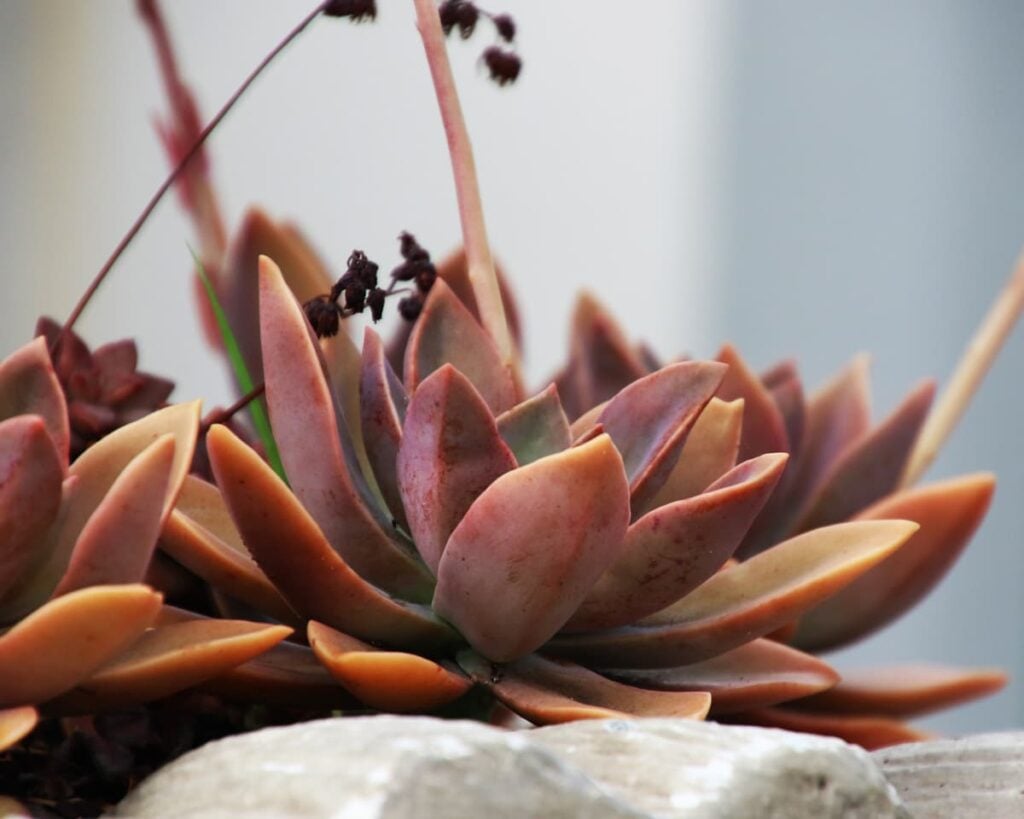Everything You Need to Know about Succulents Care

Succulents are plants with fleshy, thickened leaves and/or swollen stems that store water. The word “succulent” comes from the Latin word succus, meaning juice or sap. They are a popular choice of home gardeners because they are beautiful to look and nearly indestructible. They’ve adapted to survive arid conditions found throughout the world, from Africa to the deserts of North America.
Succulents Care
Because of their special ability to retain water, succulents tend to thrive in warm, dry climates and don’t mind a little neglect. This makes them well adapted to indoor growing and ideal for people desiring low-maintenance houseplants. Here are some general Succulents care tips.
Light
Most succulents prefer bright light when kept indoors or out. They should get at least 6 hours of sunlight each day. However, too much exposure to sunlight can scorch their leaves or the leaves might also turn brown or white as the plant bleaches out and the soft tissues are destroyed.
On the other hand,an under-exposed succulent will begin to stretch, with an elongated stem and widely spaced leaves in a condition known as etiolation.
Soil
Succulents prefer fast draining potting mix specifically designed for cacti and succulents. If you don’t have access to a specialized mix, consider modifying a normal potting mix with an inorganic agent such as perlite to increase aeration and drainage.
One can also choose to pot succulents in terracotta or clay planter to help with soil drainage. The porous nature of the materials will help to wick away moisture from the soil and help your succulents avoid root rot.
Water
One of the most common mistakes many people make while growing succulents is over-watering. It is best to water more but less frequently. Succulents should be watered generously throughout the summer. Their potting mix should be allowed to dry out between waterings, but do not underwater. During the winter, when the plants go dormant, cut watering back to once every other month.

Temperature and Humidity
Succulents are much more cold-tolerant than many people realize. In the desert, where there is often a marked contrast between night and day, succulents thrive in the colder nights, where temperatures sometimes reach 4 degrees Celsius or lower. Ideally, succulents prefer daytime temperatures between 21 degrees Celsius and about 29 degrees Celsius, and night-time temperatures between 10 degrees Celsius and 12 degrees Celsius.
When it comes to humidity, not all succulents are created the same. Some prefer more humidity than others, but as a generally rule of thumb, they don’t have an issue with humidity levels slightly above or below 80 percent humidity.
Fertilizer
The plants benefit most from fertilizer in the spring (when the days get longer and new growth begins), and again in late summer. Use a balanced, all-purpose, water-soluble fertilizer diluted to half the strength recommended on the package instructions. There is no need to fertilize succulents in winter when they’re semi-dormant. They don’t need the nutrient boost because they are not actively growing.

Common Problems
- Symptom: Root rot
Cause: Excess moisture/over-watering. - Symptom: Leave discolouration
Cause: Excess sunlight. - Symptom: Wilted, wrinkled leaves
Cause: Under-watering. - Symptom: Brown/red/black leaves
Cause: Rot.
As you see Succulents care is easy! There are some succulent species that don’t require a lot of light, which makes them the ideal choice for spaces devoid of natural light. One of the reasons that succulents are so popular is that they are easy to take care of. They do not require much water or need to be re-potted. They grow slowly and do not need to be pruned.
Succulents care reference: TheSpruce
